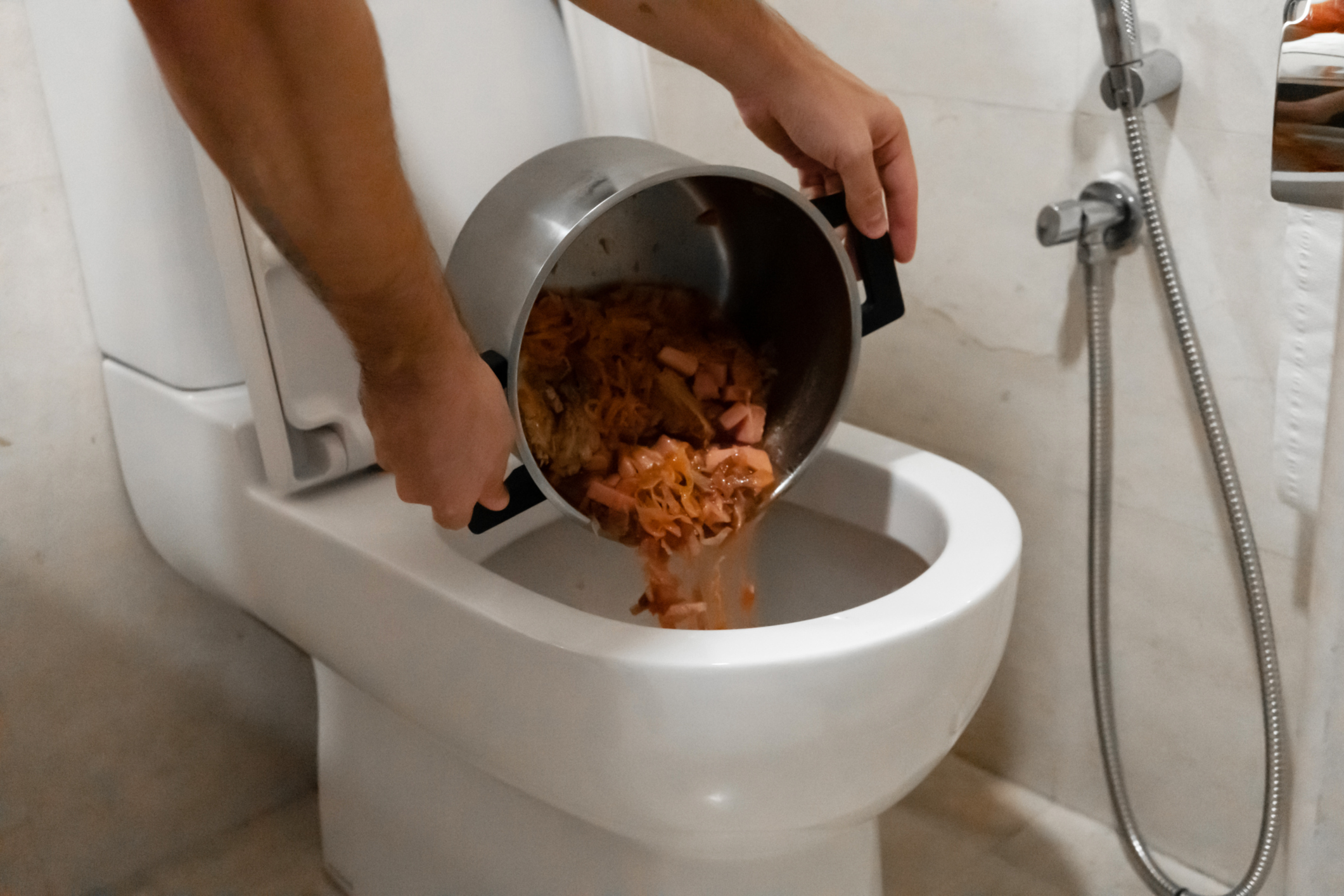Can You to Flush Food in the Toilet?
Can You to Flush Food in the Toilet?
Blog Article
The publisher is making several good pointers about Flushing Food Down the Toilet? as a whole in the article which follows.

Introduction
Many people are commonly faced with the predicament of what to do with food waste, especially when it comes to leftovers or scraps. One typical question that emerges is whether it's alright to purge food down the toilet. In this short article, we'll explore the reasons people may take into consideration flushing food, the repercussions of doing so, and different approaches for correct disposal.
Reasons people might think about flushing food
Lack of recognition
Some people may not know the prospective harm brought on by purging food down the toilet. They may incorrectly think that it's a harmless technique.
Benefit
Flushing food down the commode might seem like a quick and simple service to disposing of undesirable scraps, particularly when there's no nearby garbage can offered.
Laziness
In some cases, people might merely pick to flush food out of large negligence, without considering the effects of their actions.
Effects of flushing food down the bathroom
Ecological effect
Food waste that ends up in waterways can contribute to contamination and harm aquatic ecological communities. In addition, the water used to flush food can strain water sources.
Pipes issues
Flushing food can lead to blocked pipelines and drains pipes, creating costly plumbing repair services and hassles.
Kinds of food that need to not be purged
Fibrous foods
Foods with fibrous appearances such as celery or corn husks can get tangled in pipelines and trigger clogs.
Starchy foods
Starchy foods like pasta and rice can soak up water and swell, leading to clogs in pipelines.
Oils and fats
Greasy foods like bacon or food preparation oils ought to never be flushed down the toilet as they can solidify and create blockages.
Correct disposal techniques for food waste
Making use of a garbage disposal
For homes equipped with garbage disposals, food scraps can be ground up and flushed with the pipes system. Nevertheless, not all foods appropriate for disposal in this fashion.
Recycling
Specific food product packaging materials can be recycled, lowering waste and decreasing ecological impact.
Composting
Composting is an environmentally friendly way to deal with food waste. Organic products can be composted and utilized to enrich soil for horticulture.
The value of correct waste administration
Minimizing ecological harm
Appropriate waste monitoring techniques, such as composting and recycling, help reduce contamination and protect natural deposits for future generations.
Shielding plumbing systems
By avoiding the method of flushing food down the toilet, homeowners can stop pricey plumbing fixings and maintain the honesty of their plumbing systems.
Conclusion
In conclusion, while it may be tempting to flush food down the toilet for convenience, it is very important to comprehend the prospective consequences of this action. By taking on appropriate waste management techniques and dealing with food waste sensibly, people can add to healthier pipes systems and a cleaner atmosphere for all.
FLUSH FOOD DOWN THE TOILET?
FLUSHING FOOD CAN CAUSE BLOCKED DRAINS IN YOUR HOME
All of the plumbing fixtures in your home are connected to the same sewer pipe outside of your home. This outdoor sewer pipe is responsible for transporting all the wastewater from your home to the Council sewer mains. Even small pieces of food that go down the kitchen sink can cause problems for your sewer. It should therefore be obvious that flushing larger bits of food, such as meat, risks a clog in either the toilet itself or the sewer pipes. Flushing greasy food is even more problematic because oil coagulates when it cools, coating the interior lining of your pipes.
THE TOILET IS NOT A BIN
Food isn’t the only thing that people shouldn’t be flushing down the toilet. People use the toilet to dispose of all kinds of things such as tampons, makeup wipes, dental floss, kitty litter and even underwear. Water goes to great lengths to educate residents about the high costs and stress placed on wastewater treatment systems simply from people flushing the wrong stuff down the toilet. It costs taxpayers millions of dollars each year, and homeowners thousands in blocked drain repairs.
FLUSHING FOOD IS A WASTE OF WATER
Flushing food is a waste of our most precious resource - water. In June this year Level 1 water restrictions were introduced to protect water supply from drought conditions. Much of New South Wales continues to be affected by prolonged drought with recent figures revealing up to 97 per cent of the state remains in drought. Depending on whether you have a single or dual flush toilet, every single flush uses between five and 11 litres of water. In the current climate this is a huge amount of water to be wasting on flushing food that should be placed in the bin (or better yet, the compost).
https://www.jabplumbingsolutions.com.au/blog/can-you-flush-food-down-the-toilet

I'm just very intrigued by and I hope you appreciated the entire article. Do you know someone else who is truly interested in What Can Happen If You Flush Food Down the Toilet?? Be sure promote it. Thank you for taking the time to read it.
Book Now Report this page